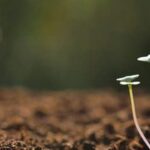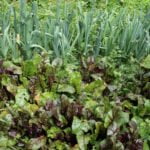Vegetable gardening in College Station, Texas, offers a unique set of challenges and opportunities for those looking to cultivate their own produce. In this guide, we will explore the ins and outs of successful vegetable gardening in this specific region, including tips for understanding the local climate, selecting the right vegetables to grow, and effectively caring for your garden.
Located in East-Central Texas, College Station experiences a humid subtropical climate with hot summers and mild winters. Understanding how this climate impacts vegetable gardening is essential for anyone looking to start their own garden in the area. From selecting the best vegetables to preparing the soil, our guide will cover all you need to know about thriving in this unique environment.
Finding the perfect location for your vegetable garden is crucial for success. In College Station, factors such as sunlight exposure and drainage can make a significant difference in your garden’s productivity. We will discuss how to navigate these considerations and choose the optimal spot for planting your vegetables. Whether you’re a novice or an experienced gardener, our comprehensive guide will provide valuable insights into vegetable gardening in College Station, Texas.
Understanding the Texas Climate and Its Impact on Vegetable Gardening
The Texas climate plays a significant role in the success of vegetable gardening in College Station. With hot, dry summers and mild winters, it’s important for gardeners to understand how these weather patterns can impact their crops.
Understanding the Heat
The intense heat of a College Station summer can pose challenges for vegetable gardeners. Certain crops, such as tomatoes and peppers, may thrive in the heat, while others, like lettuce and spinach, may struggle. It’s important to choose heat-tolerant varieties and provide shade for more delicate plants during the hottest part of the day.
Managing Watering Needs
With limited rainfall and high evaporation rates, proper watering is essential for successful vegetable gardening in College Station. Drip irrigation systems and soaker hoses can help deliver water directly to the roots of your plants while minimizing evaporation. Mulching your garden beds can also help retain moisture and reduce the frequency of watering.
Preparing for Cold Snaps
While winters in College Station are relatively mild compared to other parts of the country, occasional cold snaps can still occur. It’s important to be prepared to protect your plants from frost by covering them with fabric or bringing potted plants indoors when necessary. Additionally, selecting cold-hardy vegetables such as kale and carrots can ensure a successful winter harvest.
By understanding how the unique Texas climate impacts vegetable gardening in College Station, gardeners can make informed decisions about plant selection, watering practices, and protecting their crops from extreme temperatures. With careful planning and attention to these factors, you can create a thriving vegetable garden that produces bountiful harvests year-round.
Finding the Right Location for Your Vegetable Garden in College Station
When it comes to vegetable gardening in College Station, Texas, one of the most important factors for success is finding the right location for your garden. The ideal spot should receive at least 6-8 hours of sunlight daily and have access to water. Additionally, it’s essential to consider factors such as drainage, wind exposure, and proximity to trees and other potential sources of shade.
One key consideration when choosing a location for your vegetable garden in College Station is the soil quality. It’s crucial to have your soil tested to determine its pH level and nutrient content. This will help you make informed decisions about any necessary soil amendments or fertilizers. Knowing the composition of your soil will also guide you in selecting the best vegetables to grow based on their specific soil requirements.
Another important aspect to consider when finding the right location for your vegetable garden is proximity to your home. Selecting a spot that is convenient for frequent monitoring and maintenance will increase the likelihood of a successful harvest.
In summary, finding the right location for your vegetable garden in College Station, Texas involves careful consideration of sunlight exposure, soil quality, and proximity to your home. By taking these factors into account, you’ll be setting yourself up for a thriving vegetable garden that yields abundant produce.
| Factor | Consideration |
|---|---|
| Sunlight Exposure | At least 6-8 hours daily |
| Soil Quality | Test pH level and nutrient content |
| Proximity to Home | Select a convenient spot for monitoring |
Choosing the Best Vegetables to Grow in College Station, Texas
When it comes to vegetable gardening in College Station, Texas, choosing the right vegetables to grow is essential for a successful harvest. The hot and humid climate of Texas can pose challenges for some vegetables, so it’s important to select varieties that are well-suited to the local conditions. Here are some of the best vegetables to consider growing in your College Station garden:
- Tomatoes – With the proper care and attention, tomatoes thrive in the Texas heat and can produce an abundance of delicious fruits.
- Peppers – Both sweet and hot pepper varieties do well in College Station, making them a great choice for home gardeners.
- Squash – Summer squash varieties such as zucchini and yellow crookneck are well-adapted to the Texas climate and can be prolific producers.
- Okra – This Southern favorite thrives in the heat and is a staple in many Texas gardens.
- Cucumbers – With plenty of water and sunlight, cucumbers can flourish in College Station, providing you with crisp, refreshing snacks.
In addition to these staple vegetables, consider incorporating some heat-tolerant leafy greens like Swiss chard or kale into your garden for added variety. These greens can withstand the Texas heat better than many other leafy vegetables, making them a great choice for local gardeners.
When selecting which vegetables to grow in your College Station garden, also keep in mind your personal preferences and what grows well in the specific microclimate of your yard. By choosing vegetables that are well-suited to the local climate and your own tastes, you’ll set yourself up for a bountiful harvest.
Lastly, don’t forget about native plants. Some native plants like black-eyed peas (cowpeas) or Cherokee Purple tomatoes have been grown traditionally by Texans because they thrive under these conditions.
Remember that every crop needs specific care; research about each plant behavior before starting your planting plan as this ensures healthy growth.
Preparing and Amending the Soil for Successful Vegetable Gardening
When it comes to vegetable gardening in College Station, Texas, one of the most crucial steps for success is preparing and amending the soil. The soil quality directly impacts the health and yield of your vegetables, so taking the time to properly prepare it will pay off in the long run.
To ensure successful vegetable gardening in College Station, Texas, follow these key steps for preparing and amending the soil:
1. Test the Soil: Before making any amendments, it’s essential to test the soil to determine its pH level and nutrient content. You can purchase a soil testing kit or send a sample to a local extension office for analysis.
2. Add Organic Matter: Incorporating organic matter into the soil is vital for providing nutrients and improving its structure. This can be done by mixing in compost, manure, or other organic materials.
3. Adjust pH Levels: Most vegetables thrive in slightly acidic soil with a pH range of 6.0-7.0. If your soil test reveals that the pH levels are too high or too low, you can adjust it by adding lime to raise pH or sulfur to lower it.
4. Consider Mulching: Once the soil has been properly amended, consider adding a layer of mulch around your vegetables. Mulch helps retain moisture, suppresses weeds, and maintains even soil temperatures.
By following these steps to prepare and amend the soil for your vegetable garden in College Station, Texas, you’ll create an optimal environment for healthy plant growth and bountiful harvests.
In addition to these steps, it’s essential to monitor your garden’s progress and make adjustments as needed throughout the growing season. Regularly checking on the condition of your soil and addressing any issues that arise will ensure that your vegetable garden thrives in College Station’s unique climate.
Tips for Planting and Caring for Your Vegetable Garden in College Station
When it comes to planting and caring for your vegetable garden in College Station, Texas, there are several important tips to keep in mind. First and foremost, it’s crucial to pay attention to the specific needs of the vegetables you’ve chosen to grow. In Texas, the climate can be quite hot and dry, so make sure to provide sufficient water for your plants, especially during the peak of summer.
Another important consideration is sunlight. Most vegetables require at least 6-8 hours of direct sunlight each day, so choose a location for your garden that receives ample sun exposure. Additionally, it’s essential to keep an eye on the soil moisture levels and make sure that your plants are not being overwatered or underwatered.
When caring for your vegetable garden in College Station, it’s also important to practice proper weed control. Weeds can compete with your vegetables for nutrients and water, so regular weeding is essential for a successful garden. Consider using mulch to help suppress weeds and retain soil moisture.
Furthermore, consider implementing companion planting techniques to naturally deter pests and promote growth. For example, planting marigolds alongside vegetables can help repel harmful pests while attracting beneficial insects like bees. Similarly, interplanting certain herbs with your vegetables can enhance their flavor and protect them from common diseases.
| Tips for Planting and Caring | Details |
|---|---|
| Watering | Ensure sufficient water supply especially during hot summers. |
| Sunlight | Choose a location that receives at least 6-8 hours of direct sunlight daily. |
| Weed Control | Practice regular weeding and consider using mulch. |
Dealing With Common Pests and Diseases in College Station, Texas
Identifying Common Pests in College Station
The warm and humid climate in College Station, Texas makes it a conducive environment for various pests and diseases that can wreak havoc on your vegetable garden. Some common pests to watch out for include aphids, spider mites, caterpillars, and whiteflies. These pests can cause damage to your plants by sucking sap from the leaves, chewing holes in the foliage, or transmitting diseases.
Preventing and Controlling Pest Infestations
To prevent pest infestations in your vegetable garden, it is important to practice good gardening habits such as regular weeding, proper spacing between plants, and adequate watering. Additionally, you can encourage natural predators like ladybugs and lacewings to control pest populations. If an infestation occurs, consider using insecticidal soaps or neem oil as organic methods of control.
Managing Diseases in Your Vegetable Garden
Common diseases that may affect your vegetable garden in College Station include powdery mildew, blight, and root rot. To prevent the spread of diseases, avoid overcrowding plants and provide adequate air circulation. Proper watering techniques – such as watering at the base of the plants early in the day – can also help minimize the risk of fungal diseases.
If signs of disease appear on your plants, promptly remove infected foliage and dispose of it to prevent further spread. Consider using fungicidal sprays as a last resort if disease pressure becomes too high.
Harvesting and Enjoying the Fruits of Your Labor
In conclusion, vegetable gardening in College Station, Texas can be a rewarding and successful endeavor with the right knowledge and preparation. By understanding the unique climate of Texas and utilizing the tips and guidelines provided in this guide, gardeners in College Station can enjoy a bountiful harvest of fresh, home-grown vegetables.
It is important to remember that successful vegetable gardening in College Station requires careful attention to detail, from selecting the right location for your garden to preparing and amending the soil for optimal plant growth. By following the recommendations for planting, caring for your garden, and dealing with common pests and diseases, you can ensure that your vegetable garden thrives throughout the growing season.
Ultimately, as you harvest and enjoy the fruits of your labor from your vegetable garden in College Station, Texas, you will no doubt appreciate the satisfaction of growing your own food. Whether you are a seasoned gardener or just starting out, this guide provides valuable insights and practical tips to help you achieve success in vegetable gardening in College Station. With dedication and perseverance, you can look forward to a productive and fulfilling gardening experience in this region.
Frequently Asked Questions
When Should I Start a Vegetable Garden in Texas?
In Texas, the best time to start a vegetable garden is in the spring, specifically around March or April. This allows for the soil to warm up and reduces the risk of frost damaging young plants.
What Is the Easiest Vegetable to Grow in Texas?
The easiest vegetable to grow in Texas would have to be okra. This plant thrives in hot temperatures, which are common in Texas, and it requires minimal maintenance. Okra also produces a high yield without much effort.
What Zone Is Texas for Planting Vegetables?
Texas is divided into several planting zones, ranging from zone 6a to zone 9a. The specific zone for planting vegetables in Texas varies depending on the region. It’s important for gardeners to identify their exact planting zone in order to choose the right vegetables for their area and ensure a successful harvest.

If you’re looking to get into vegetable gardening, or are just looking for some tips on how to make your current garden better, then you’ve come to the right place! My name is Ethel and I have been gardening for years. In this blog, I’m going to share with you some of my best tips on how to create a successful vegetable garden.





